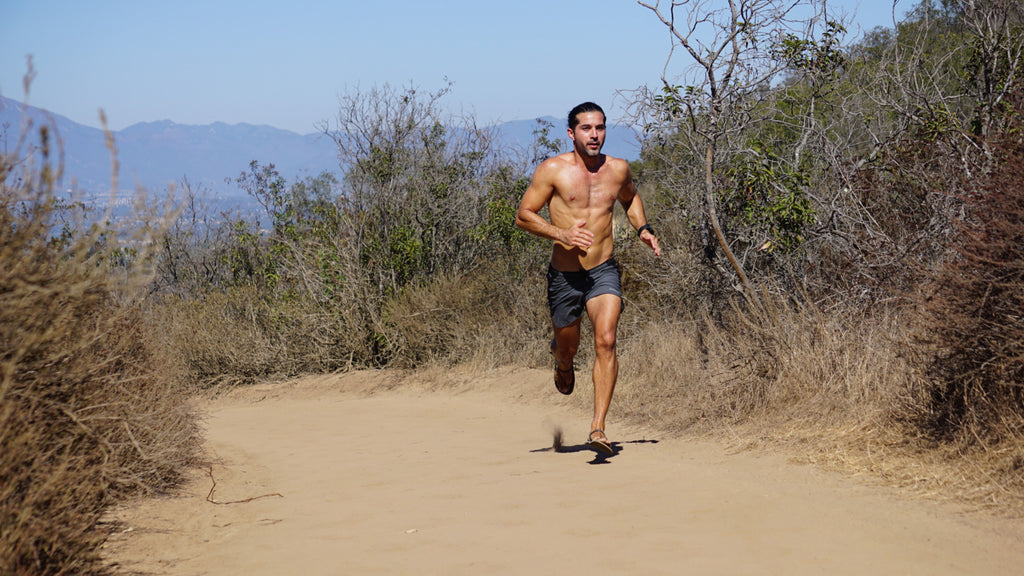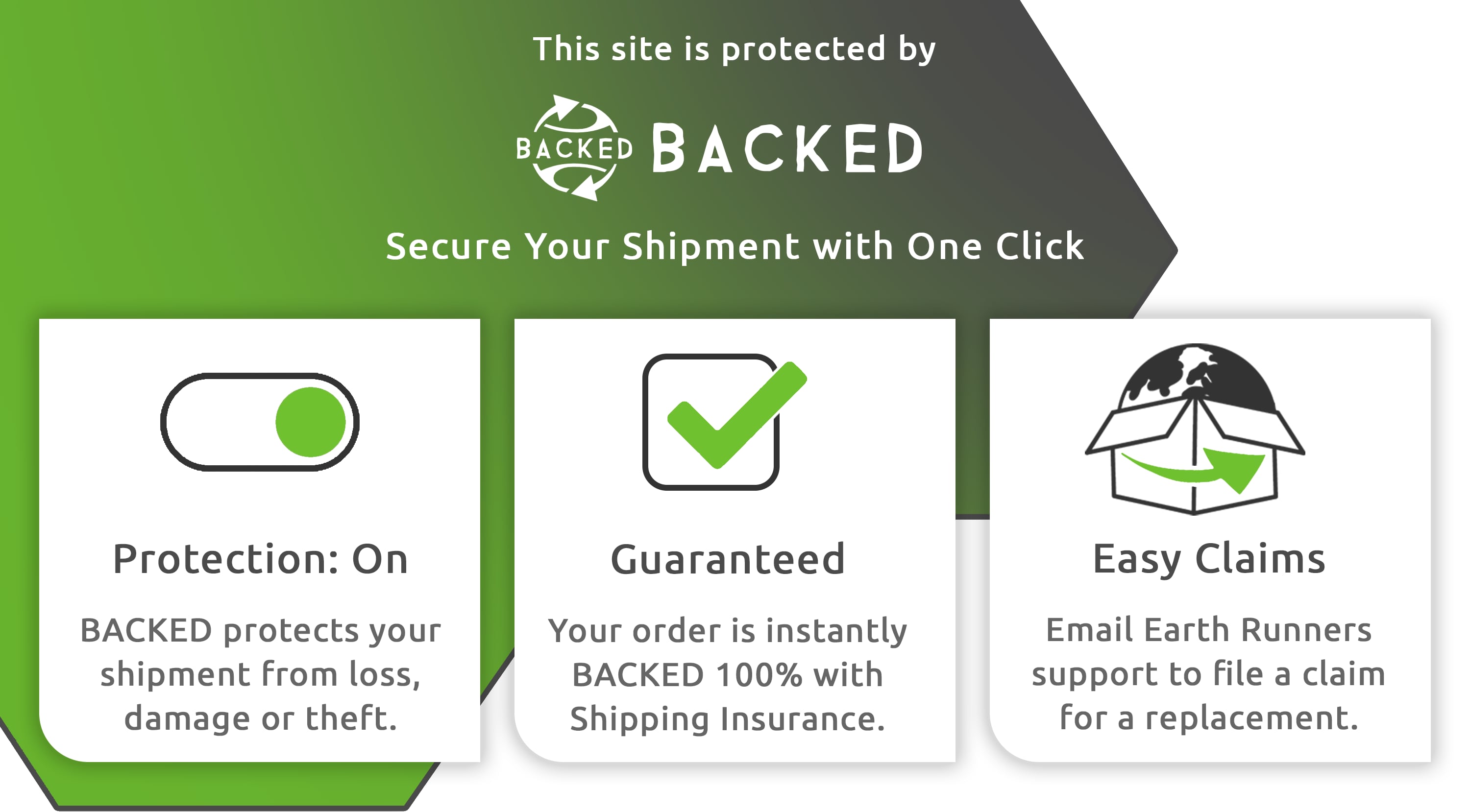Interested in minimalist footwear but not sure where to start or afraid of injury?
Just like any of our lost primal skills, it takes time and patience to re-develop the skills, muscles and biomechanics (a fancy word for how your body moves) to get back to your body’s original design. Keep reading for a primer in the advantages of and transitioning to minimalist footwear.
Advantages of Minimalist Footwear
Running, walking and living barefoot or in minimal footwear is ideal, yet many people are far from it. Years of wearing heavily cushioned shoes with high heel to toe drop have weakened our feet and altered our body mechanics, training us to rely on our shoes to absorb impact in lieu of our lower leg muscles. Hip alignment  is thrown off, causing lower back, knee and foot issues. (see image right) Beyond that, the human body has become less able to thrive and be useful in the world it was created to live in. This was all brought about by “well-meaning” doctors and companies who do not have enough faith in the human body’s ability to adapt, repair and be all around resilient. Thus, overprotective footwear ends up causing or reinforcing many of the issues it is designed to protect us from.
is thrown off, causing lower back, knee and foot issues. (see image right) Beyond that, the human body has become less able to thrive and be useful in the world it was created to live in. This was all brought about by “well-meaning” doctors and companies who do not have enough faith in the human body’s ability to adapt, repair and be all around resilient. Thus, overprotective footwear ends up causing or reinforcing many of the issues it is designed to protect us from.
No matter where you are on a scale from ultra-runner to doctor prescribed inserts, it’s not too late to transition to minimal footwear.
Convinced? Here’s How To Get Started
First off, slow and steady wins the race. Undoing years of altered movement cannot be done overnight. It takes time to re-develop the lower leg and foot muscles and biomechanics needed to wear minimalist footwear.
- Start Small: Begin by walking barefoot around your house or in your backyard.
- Listen to Your Body: If your feet are not used to being free, they will probably be sore along with your calves. If they are, give them a break (i.e. put your shoes back on), then start going barefoot again when the soreness goes away. This soreness is your muscles and tendons getting stronger to better be as nature intended. Rest and stretching helps them recover.
- Increase Foot Freedom: As your feet and lower legs get stronger, increase your barefoot time and invest in some minimalist footwear, the Earth Runners Alpha are a great option with a little more cushioning, allowing you to venture outside without fear of rocks etc. Continue to increase times and mileage with your feet free.
Developing Proper Biomechanics
Since there is no longer an inch or so of cushion between you and the ground, good biomechanics is very important to injury prevention and overall enjoyment.
- Most people walk and run with a heel strike. This is an adaptation to wearing padded shoes with a lifted heel (⅛-½”). Heel striking relies on the shoe to absorb shock instead of the lower leg muscles. Walking and running barefoot while still heel striking will force your bones and joints to absorb the shock, resulting in foot, knee and lower back pain.
- Practice walking then running with a forefoot or mid-foot strike. This walking and running style uses your foot and lower leg muscles as shock absorbers. Again take things slow, allowing soreness to heal between sessions. The below video is a good example of good barefoot running foot strike. You can even video yourself to compare. Everyone's stride is unique so focus more on striking in a way that feels natural to you.
Now, get outside to free your feet a take the first step toward transitioning to minimalist footwear!
Keep eyes out for the next artical where we will get a little more technical with some stretches and movements to help you enjoy your new found foot freedom more and return your body back to it’s natural design.
Author: Curtis Hall is the Co-Founder and Head Creative at BAREfit Adventure Training, a fitness company based out of Louisville, Ky. BAREfit uses all upcycled and handmade equipment to train people to Make the World Their Playground.
www.barefitpt.com
Follow them at:
instagram.com/barefitpt
facebook.com/barefitpt





 Doing other activities to improve your strength, balance, stability, and endurance will transfer over to barefoot running making you a stronger runner less prone to injury. Strength training can help equalize muscle imbalances, and decrease fatigue by improving muscle strength and endurance. Balancing exercises like slacklining, box jumps, and other sports are all great ways to improve foot, ankle, leg and core strength needed for barefoot running. Do these activities barefoot if you can as I mentioned in Tip #2. Better balance will also help you run over uneven surfaces and on challenging terrain with more confidence.
Doing other activities to improve your strength, balance, stability, and endurance will transfer over to barefoot running making you a stronger runner less prone to injury. Strength training can help equalize muscle imbalances, and decrease fatigue by improving muscle strength and endurance. Balancing exercises like slacklining, box jumps, and other sports are all great ways to improve foot, ankle, leg and core strength needed for barefoot running. Do these activities barefoot if you can as I mentioned in Tip #2. Better balance will also help you run over uneven surfaces and on challenging terrain with more confidence.



